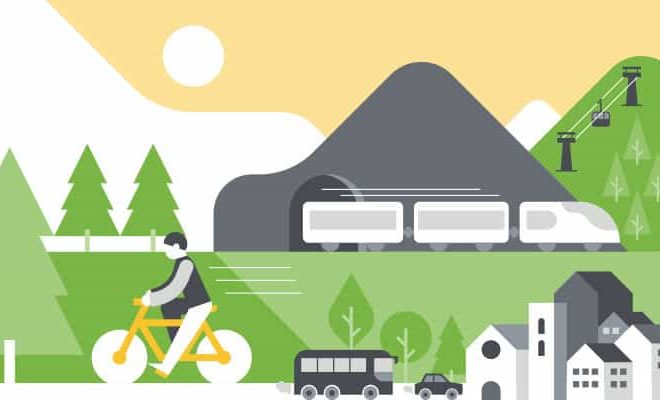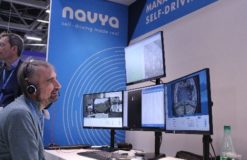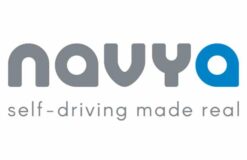
By Marc Amblard, Managing Director, Orsay Consulting.
All indicators are trending towards continued growth in the global demand for mobility. The UN anticipates that the world population will increase from 7.8B to 9.7B in 2050. Urbanization is expected to reach 68% by 2050 vs. 55% today. The number of people who can afford a personal vehicle is constantly increasing. As a result, the global fleet of light vehicles is expected by some to grow from 1.2B today to 1.6B in 2040. Consequently, it is paramount to transform how we move people and goods in order to offer “more mobility with less impact,” as declared by Florent Menegaux, CEO of Michelin, at the Movin’On conference in early June in Montreal.
In order to address this existential challenge, the transformation towards sustainable mobility will involve three interconnected pillars: environmental, social and economic. Performance will be measured according to the “triple bottom line,” assessing each pillar. Sustainable mobility solutions must be designed to contribute positively to the communities they serve while respecting their environmental, social and economic objectives.
Environmental Impact
The 2015 Paris Agreement, which has been signed by 195 countries, has the ambitious — yet absolutely paramount — objective to mitigate global warming. Transportation as a whole represents a big share of greenhouse gas (GHG) emissions and an even bigger proportion of energy consumption. It contributes 27% of total GHG in the EU (2016, 20% excluding air and maritime transportation), and 29% in the USA (2017). In 2017, transportation represented 58% of all the energy consumed on the planet, according to the International Energy Agency. Under the Agency’s “sustainable development scenario,” the amount of energy used by transportation is expected to drop by 39% by 2040 and represent 50% of global energy consumption then. This is still a sizable share.
This very significant reduction requires a massive shift from internal combustion to electric powertrains. In 2040, BNEF foresees that plug-in vehicles will represent 54% of all light vehicles sold, yet still only 33% of the global fleet, vs. respectively about 2% and 0.05% today. Increased biking and walking instead of driving will go a long way in urban centers. It is also necessary to use less energy per km traveled by increasing the density of transportation (mass transit) or to curb useless trips by consuming local products for example. In addition, the transformation must come from a massive shift from fossil to renewable energy sources — another subject altogether.
Globally, we are depleting natural ressources about twice as fast as they are generated. The World Overshoot Day, the day in the year when we have used our annual natural resource “allowance,” is now July 29th vs. November in the 1980s. Not all countries are equal. Across the world, Overshoot Day ranges currently from February 11th for Qatar to March 15th for the USA, May 15th for France, June 14th for China, all the way to December 18th for Indonesia. This is clearly not sustainable.

Social Impact
Access to mobility is a basic need for all. However, solutions are not available to everyone. Issues include the lack of public transit, or financial or health constraints preventing people from driving their own vehicle. Living in a mobility desert can mean being excluded from society for some. If thoughtfully deployed, shared mobility solutions and extended public transit (and a smart combination thereof), can enable those who don’t have access to a private vehicle to be mobile. This is a critical contribution as it facilitates social inclusiveness, such as finding and holding a job outside one’s neighborhood.
Local government and mobility providers must work hand in hand to specifically address areas in dire need of mobility solutions. In the US, where mobility deserts are common, the city of Arlington, TX, with 400k inhabitants, does not have a public transit system. Private operator Via Transportation now operates an on-demand ride-share program. Similarly, Bolloré’s shared EV program, which operated in Paris for many years as AutoLib, launched in Los Angeles last year as BlueLA, with the objective to bring mobility options to low-income communities, in accordance with city officials.

Economic Impact
Mobility solutions that deplete very little natural resources and increase social inclusiveness do not have to be less business worthy. However, we do need to take a society-wide approach to analyzing their economic impact. Direct economic benefits include enabling more people to work, thus increasing tax revenue while reducing welfare costs.
The internalization of economic externalities can significantly contribute to making future mobility sustainable. For instance, we take for granted our transportation infrastructure (roads, rail tracks etc), the “right” to pollute or the “right” to cause congestion, etc. The implementation of congestion charges, carbon permits, EV credits or mobility-related taxes (fuel tax, toll, etc., to invest in our infrastructure) allows for a better representation of the total cost of a given mobility mode, thus enabling for modal decisions to progressively steer mobility towards sustainability.
Other Paths to Sustainable Mobility
“Avoid, shift or improve” is a standard approach when making mobility sustainable. Can we simply avoid a journey, e.g., shop next door rather then at the mall 20 km away? Can we shift from our private vehicle to a densified transport solution? Can we replace our dirty diesel car with an EV?
Private vehicles are typically sitting idle 95% of time. Isn’t It time we share vehicles and rides much more often? Whether vehicles are shared or not, their basic recyclability must continue to increase. In the case of EVs, the development of second lives for batteries, such as for stationary power storage, must accelerate. As vehicles become more often shared, their utilization rate will increase. How about modular, updatable, upgradeable designs to extend the life of the base vehicle?
Conclusion
Mobility is essential for both people and goods. We must take advantage of new technologies and new business models to make mobility sustainable, accessible to more people and integrated in a multimodal ecosystem for higher overall efficiency. Collaboration across public and private players, along with citizens, is more now than ever required to develop sustainable mobility by the people, for the people. Such collaboration requires long term global initiatives, such as the Paris Agreement, as well as local ones as there are no universal solutions.
Marc Amblard is the Founder & Managing Director of Orsay Consulting. Based in Silicon Valley and dedicated to the mobility transformation, Orsay Consulting provides startup and tech scouting as well as advisory services to corporate clients, and advises startups on product-market fit, go-to-market strategy, business development and partnerships.



